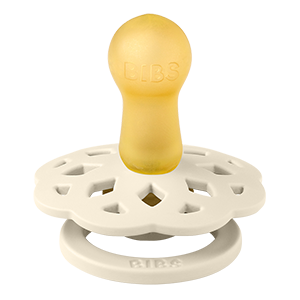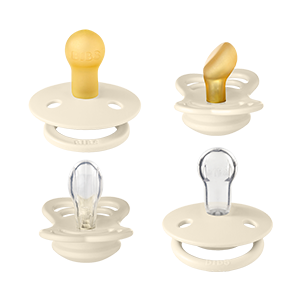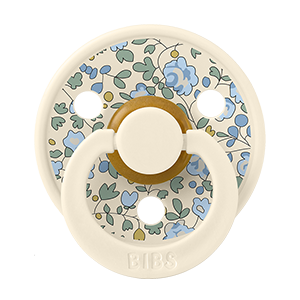This guide will take you through our quality, standards, regulations, and safety measures. It will guide you on securing the quality of your baby's pacifiers, the safety requirements all our pacifiers meet, and how to identify an original BIBS pacifier. When you buy a BIBS pacifier, always remember to monitor the baby when using the pacifier and:
Signs that the pacifier needs to be replaced
Since natural rubber latex is a natural material, it can in some cases expand. Whenever you experience a change in the material the pacifier must be replaced. Natural rubber latex pacifiers must be replaced when you see the following signs:
• Changes in the surface
• Changes in size
• Change in shape
• Rupture in the material
• Becomes brittle or sticky
Natural rubber latex vs. silicone
Natural rubber latex is a natural material and is affected by sunlight, high temperatures, and moisture which accelerates the aging process of the latex material. Since latex is a natural material color variation may occur. Silicone is an industrially manufactured hypoallergenic, odorless, and taste-neutral material that is known for its purity. The smooth transparent nipple is not as soft as natural rubber latex, but it retains its shape and can withstand high temperatures.
Cleaning
Before the very first use, sterilize the pacifier by boiling it in plenty of water for 5 minutes. This only applies before first use. When cleaning the pacifier subsequently, follow these three simple steps:
• Put the pacifiers in a clean bowl. Pour them with plenty of boiling water.
• Let the pacifiers soak for approx. 5 minutes.
• Pick them up and let them dry on a clean towel.
Important reminder
Pacifiers are a great way to promote relaxation and help babies fall
asleep, but always ensure supervision during use.
How do you recognize BIBS pacifiers?
If you are in doubt whether your pacifiers are original BIBS
pacifiers our pacifiers have the following characteristics:

Logo on nipple
We are currently working on applying the BIBS logo to all our nipples. However, a nipple without the BIBS logo is not a sign that the pacifier is a copy. It is simply that we have not implemented the new design on all our pacifier nipples yet.
































































